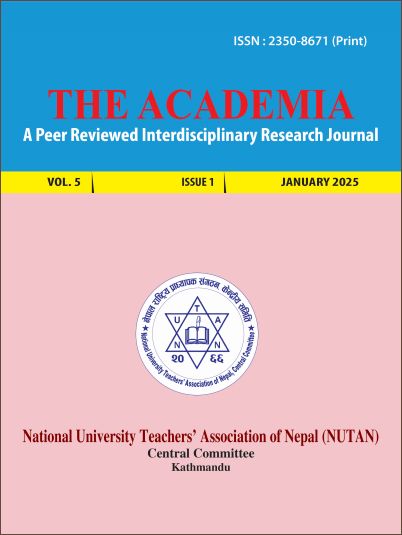Practices and Key Aspects of Intergovernmental Relations in Nepal: Major Challenges and Way Forward in Advancing Federalism
DOI:
https://doi.org/10.3126/ta.v5i1.77114Keywords:
Federalism, intergovernmental relations, vertical and horizontal relations, principles and structuresAbstract
After the promulgation of the constitution through the Constituent Assembly in 2015, Nepal became a federal state by establishing seven provinces. Following the resolution of a decade-long conflict and a long political movement for complete democracy, Nepal implemented the three levels of government system as part of its federal model. The fundamental characteristics of federalism and intergovernmental interactions are outlined in Nepal's constitution. However, there are some gaps in the constitution that need to be addressed for its broader acceptability and make it functional. The major constitutional principle governing intergovernmental relations (IGR) is coordination, cooperation and coexistence. However, the schedule list in the constitution includes an overlapping model for IGR, resulting in some powers and rights that overlap with provincial jurisdiction and concurrent powers. As a political system, federalism is hierarchical in terms of power and models with different IGR policies offered by various federal models that are specific to each country. The unique socioeconomic conditions and cultures of Nepal have implications for IGR, as do variables and governance practices. Both vertical and horizontal relations among governments are equally important factors to consider in the functioning of federalism.
Downloads
Downloads
Published
How to Cite
Issue
Section
License
Copyright (c) 2025 National University Teachers' Association of Nepal, Central Committee

This work is licensed under a Creative Commons Attribution-NonCommercial-NoDerivatives 4.0 International License.
This license enables reusers to copy and distribute the material in any medium or format in unadapted form only, for noncommercial purposes only, and only so long as attribution is given to the creator.




